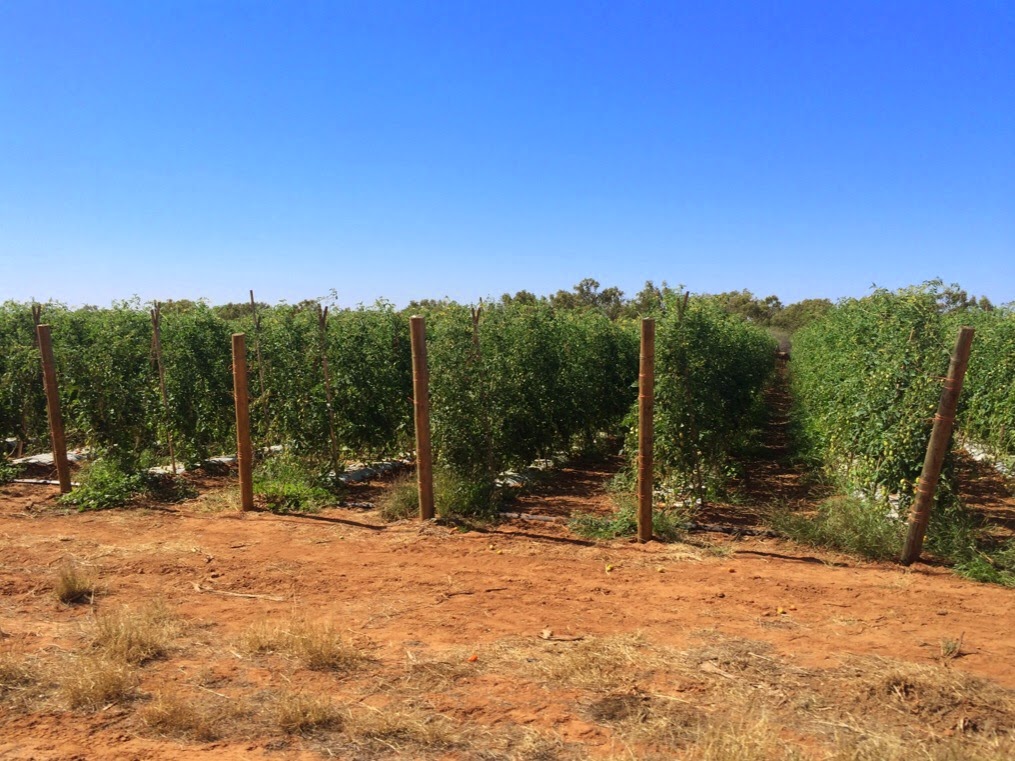

Our week in Carnarvon passed very quickly. Carnarvon is on the Gascoyne River and it's a real oasis in the sandy desert of the west coast. It's good to see grass again!

 The Gascoyne River provides fresh water for irrigation and this area is a vital food production area. Many fruits and vegetables are grown here and it was great to be able to buy plenty of fresh produce at the local growers market and farm doors. Although the river is not flowing at this time of year, fresh water is never far from the surface as clay pans trap the water which can be pumped to the gardens.
The Gascoyne River provides fresh water for irrigation and this area is a vital food production area. Many fruits and vegetables are grown here and it was great to be able to buy plenty of fresh produce at the local growers market and farm doors. Although the river is not flowing at this time of year, fresh water is never far from the surface as clay pans trap the water which can be pumped to the gardens.
There are plenty of tourist attractions in Carnarvon. The indigenous cultural centre was well worth a visit. The AV displays were excellent and we heard several stories from local aboriginal men and women.

The NASA space program and moon shots relied on the communications satellite dish at Carnarvon. It's now been decommissioned and a group of volunteers runs the Carnarvon Space and Technology Museum. Unfortunately it was closed during our visit. The museum is being upgraded and Stage 2 was due to be opened by the Australian astronaut Andy Thomas a few days after our departure.

The Mile Long Jetty can be accessed either by walking or a ride on the Coffee pot Train. A small charge helps to fund the upkeep of the train and jetty. The harbours are home to the local fishing fleet.


We took a day trip north to Quobba Station - Where the Desert Meets the Ocean. On our way we stopped off at The Blowholes where water flows into sea caves and is forced 20 metres into the air.


This is King Wave country and people have been washed from the cliffs and drowned. The rugged, rocky coastline explains why there is a lighthouse nearby.

 Further north we stopped at the Cairn which marks the sinking off the WA coast of HMAS Sydney by the German ship Kormoran on 19 November 1941. There were no survivors from the Sydney and the circumstances of the battle and subsequent sinking remain controversial. On our way back to Carnarvon we passed the pink salt lakes. The pink colour is caused by bacteria which only live in salt water. We've seen this effect before on our travels around the Yorke Peninsula in South Australia. Dampier Salt harvest salt here.
Further north we stopped at the Cairn which marks the sinking off the WA coast of HMAS Sydney by the German ship Kormoran on 19 November 1941. There were no survivors from the Sydney and the circumstances of the battle and subsequent sinking remain controversial. On our way back to Carnarvon we passed the pink salt lakes. The pink colour is caused by bacteria which only live in salt water. We've seen this effect before on our travels around the Yorke Peninsula in South Australia. Dampier Salt harvest salt here.While we were in Carnarvon, Cherryl was able to make contact with some west coast cousins she had never met. It's great to catch up with new branches of the family tree.




No comments:
Post a Comment